Economy

BLS: Regional Jobs Data Shows Slowing in Third Quarter
Written by Peter Wright
October 23, 2019
In the third quarter of 2019, the states reported a slowdown in net job creation that paralleled the national statistics.
Third-quarter regional employment data by state was released by the Bureau of Labor Statistics (BLS) on Friday. The state data follows and confirms the employment situation that we reported at the national level two weeks ago. In the third quarter, the states reported a total of 390,000 jobs created. The national report indicated a total of 470,000 jobs.
The states compile their employment numbers independently of the feds, and then both are reported by the BLS. In the almost seven years since and including Q1 2013, the feds reported total job creation of 16,658,000 and the states reported 15,974,000. Our report covers only the lower 48 states and the state numbers don’t include individuals such as the military who are employed overseas. Therefore, the federal and state totals are impressively close. Figures 1 show the history of federal data totals since 1992 and Figure 2 shows the same format for the state data.

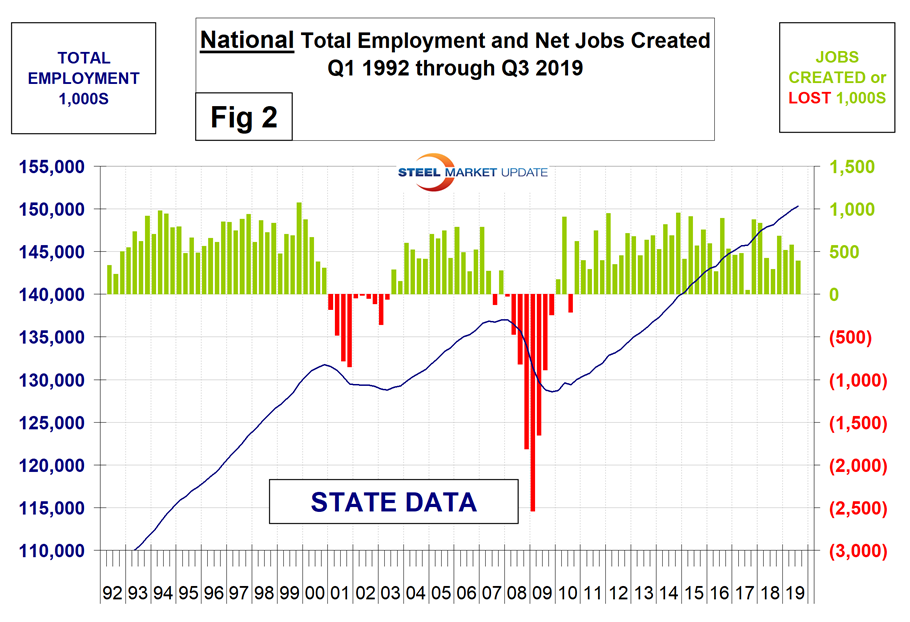
SMU has graphs in the same format for 10 geographic regions and can produce them for individual states on request. Figure 3 shows the history of the North East region.
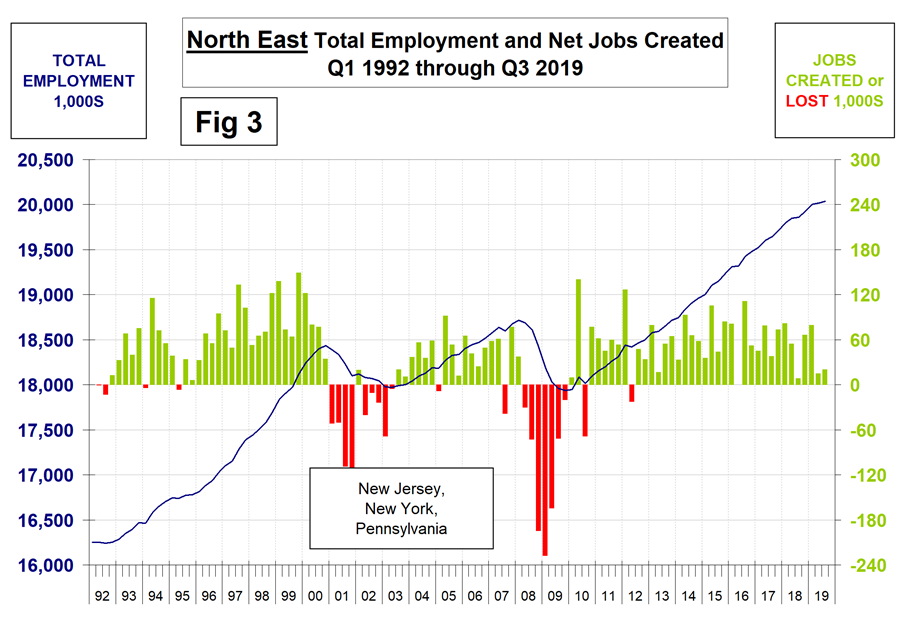
The 10 geographic regions described in this report are:
New England (CT, ME, MA, NH, RI, VT)
North East (NY, PA, NJ)
Mid Atlantic (DE, DC, MD, NC, SC, VA, WV)
North Central (IA, KS, MN, MO, NE, ND, SD)
East North Central (IL, IN, MI, OH, WI)
East South Central (AL, KY, MS, TN)
South Central (TX, OK, LA, AR)
Mountain (AZ, CO, ID, MT, NV, NM, UT, WY)
Pacific (CA, OR, WA)
South East (FL, GA)
Table 1 shows the history of quarterly job creation by region since Q1 2014. In Q4 2018 and Q1 and Q2 2019, the Pacific region created the most jobs. In the latest data, the South East took over the top spot. The numbers are seasonally adjusted and all except the East North Central region had a positive net gain in the third quarter of 2019.
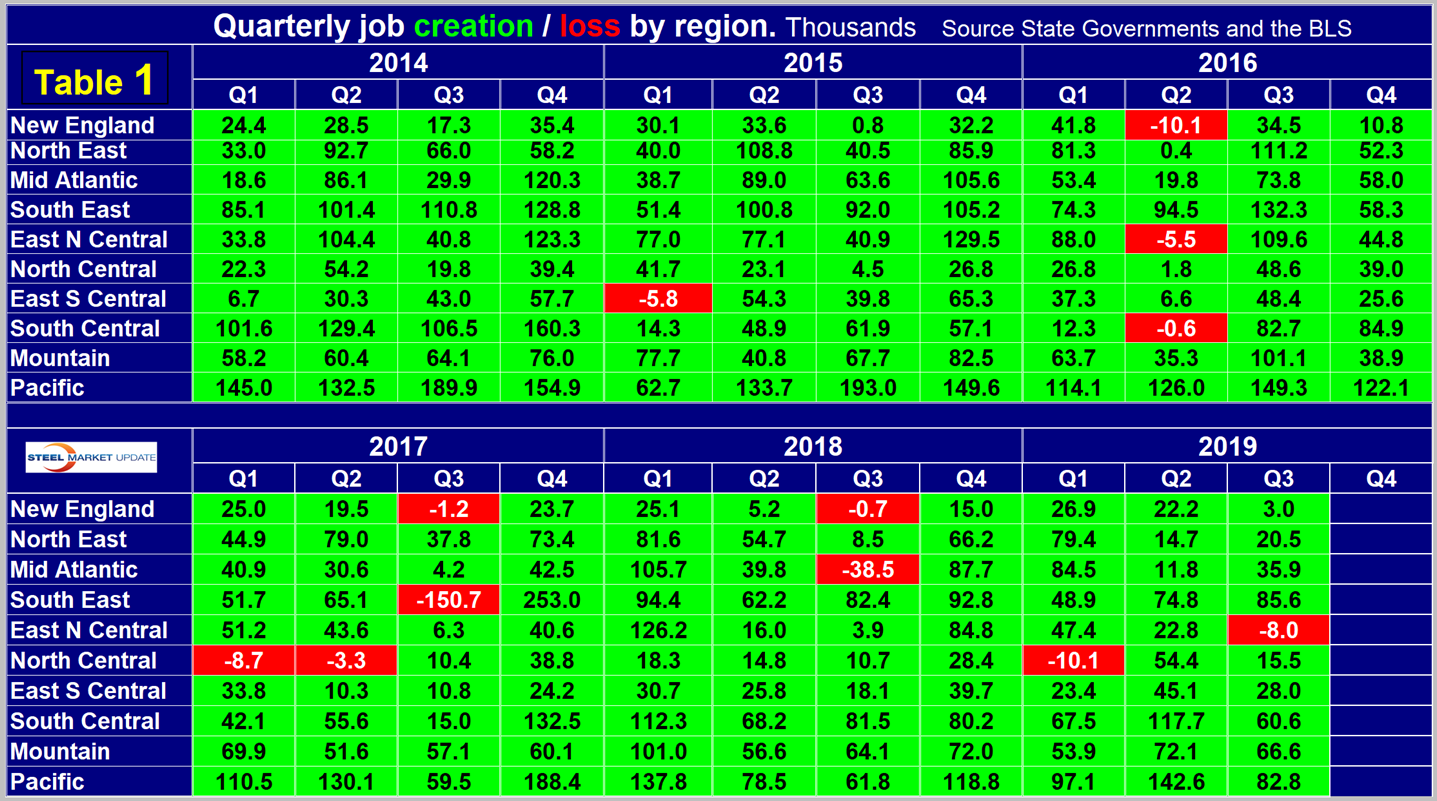
The regions have fared very differently since the pre-recession high of first-quarter 2008 and since the low point of fourth-quarter 2009. By the states’ calculations, there are now 13,339,000 more people employed than there were immediately before the recession. But of that number, more than 40 percent of the jobs were created in the South Central and the Pacific regions (Table 2).
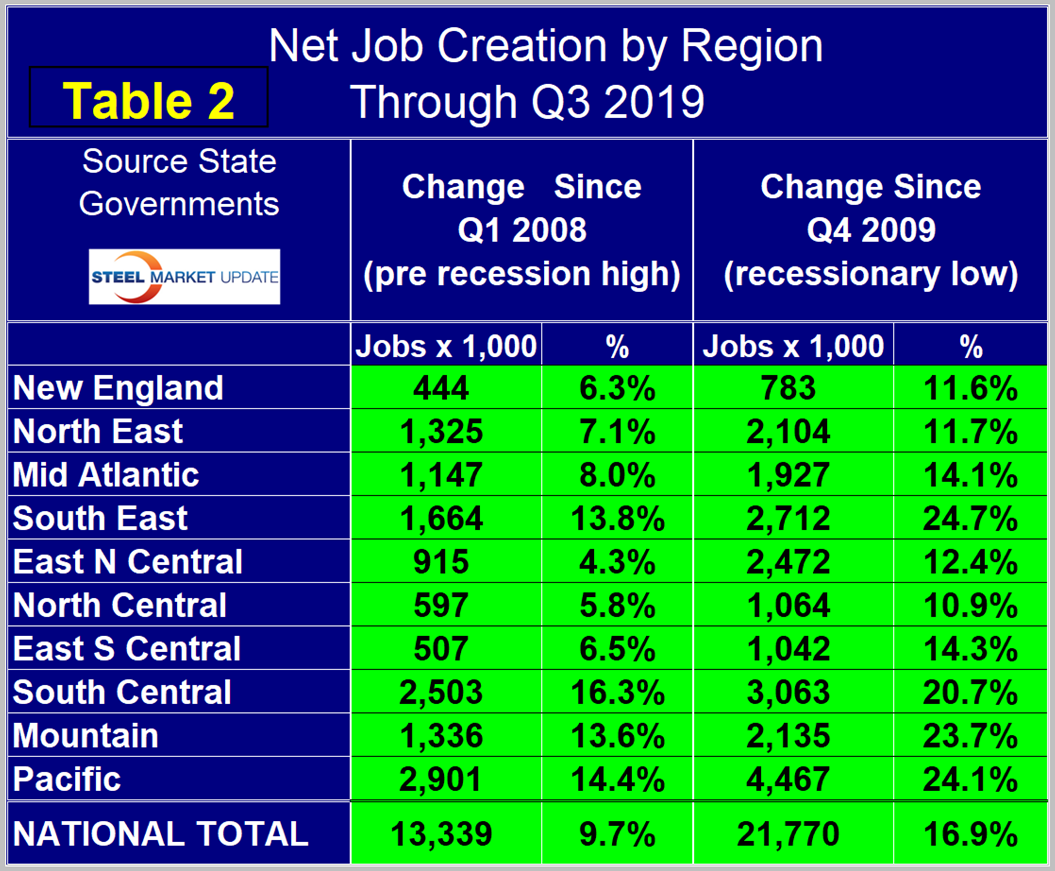
The third quarter of 2015 was the first time that every region had more people employed than at the pre-recession peak. The rate of job creation still varies widely across the country. In the last four quarters, the Pacific and South Central regions have increased their lead, closely followed by the East North Central region. New England has created the least number of jobs (Table 3).
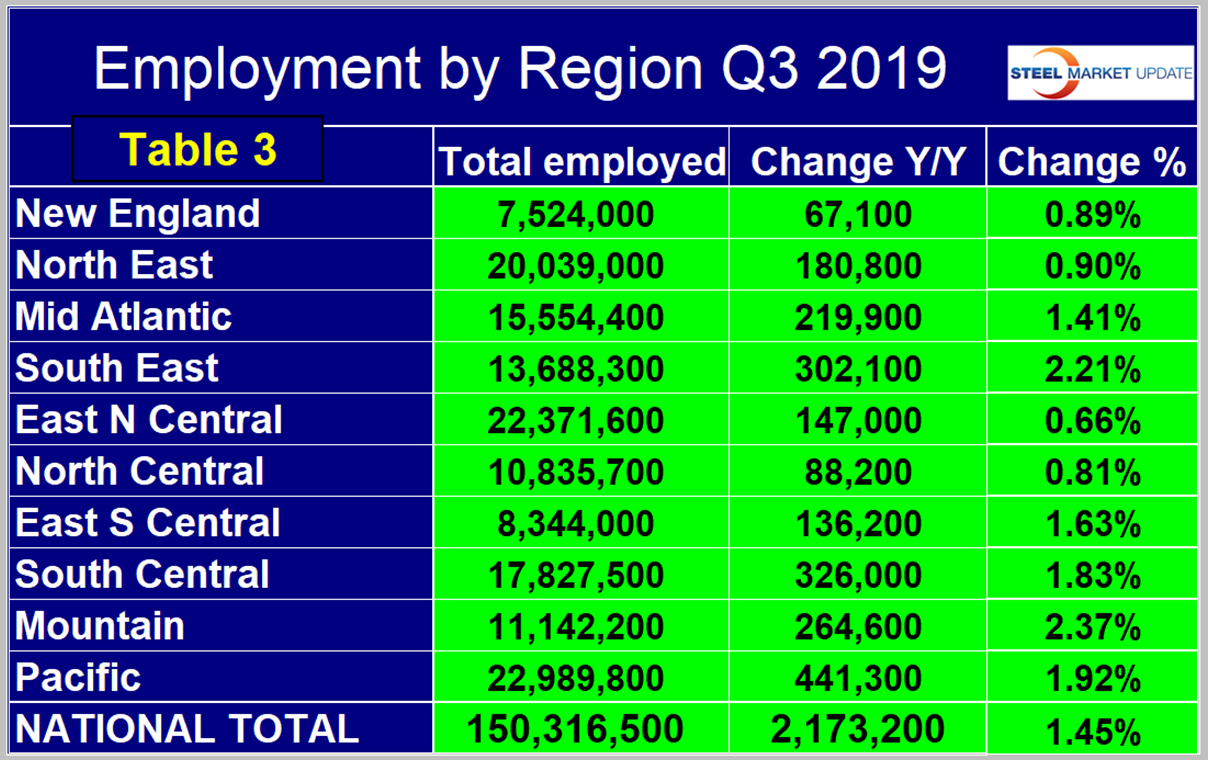
SMU Comment: We believe it’s important for those subscribers whose businesses are substantially regional to have as much data as possible to compare their own results with those of their locality. This report, along with our quarterly reports on regional GDP and regional imports, are intended to help in that respect.

Peter Wright
Read more from Peter WrightLatest in Economy

Industry groups praise Senate for passing tax and budget bill
The Steel Manufacturers Association and the American Iron and Steel Institute applauded the tax provisions included in the Senate's tax and budget reconciliation bill.

Chicago PMI dips 0.1 points in June
The Chicago Purchasing Managers Index (PMI) slipped 0.1 points to 40.4 points, in June.

Multi-family pullback drives housing starts to 5-year low in May
US housing starts tumbled in May to a five-year low, according to figures recently released by the US Census Bureau.

Architecture firms still struggling, ABI data shows
Architecture firms reported a modest improvement in billings through May, yet business conditions remained soft, according to the latest Architecture Billings Index (ABI) release from the American Institute of Architects (AIA) and Deltek.

Manufacturing in New York state contracts again
However, companies are growing more optimistic about the future.
